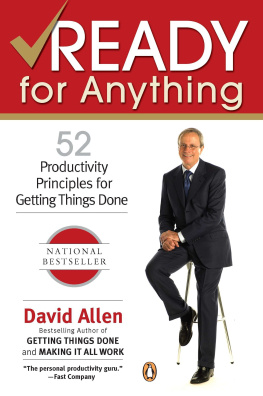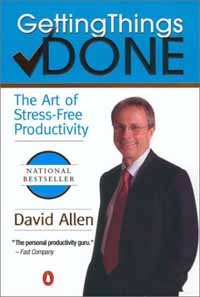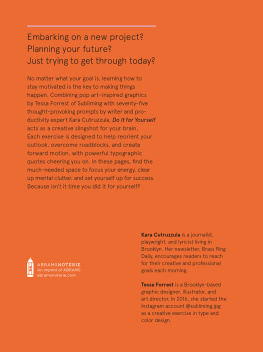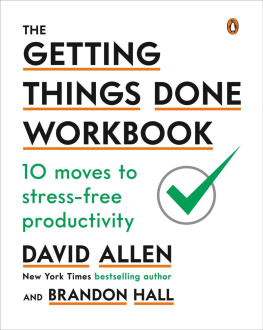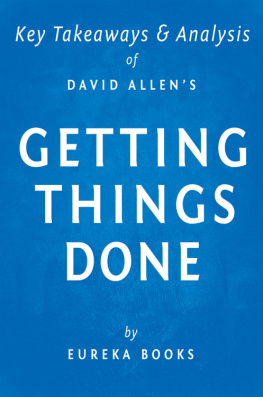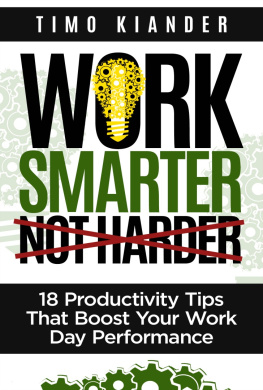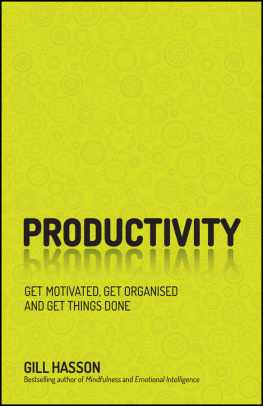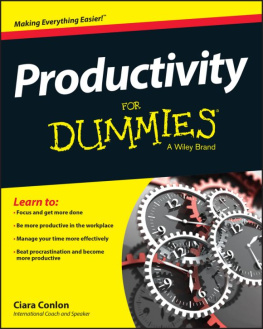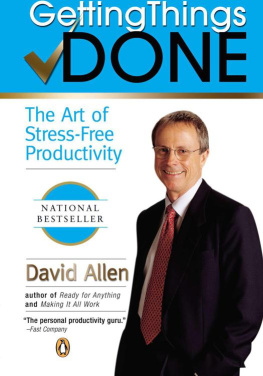M AJOR THANKS are due Stephen Singular, a freelance editor and fellow author, whom we tasked to review the last six years of my writings to distill themes and create an initial structure. His energetic, timely efforts and feedback provided a critical stake in the ground that allowed me to sharpen the focus, format the context, and really get going on this work.
Much of the material herein was originally published on my Web site and then through my e-newsletters, and as such would not have been realized as easily without the technical expertise of Greg Fisk and Eric Mack, nor without the tireless support of our office staffespecially Jodi Womack. And Im so grateful that Steve Shull early on inspired me with the idea of a newsletter as a significant platform from which to share my material.
Thanks (nicely, now, as usual) to my editor at Viking, Janet Goldstein, whose encouragement, insights, and hustle were catalytic. And to my agent, Doe Coover, who captained the project.
My wife, Kathryn, has been the backbone of the business that has allowed me to produce this material, and shes provided me not only her love but also the demonstration of it in the vital support and healthy nudges I needed, when Ive most needed them.
Introduction:
Making It Easy to Take It Easy
M AXIMUM PRODUCTIVITY is making something happenfurniture, freeways, or funwith as little effort as possible. The fact that we have effort at all, though, implies that we confront resistance and impediments when we want to get anything done. Improving productivity has a lot to do with dealing more effectively with the hindrances, barriers, and distractions that show up in our wayanything that opposes or weakens our forward motion. In a totally frictionless world, everything would just appear as soon as it was imaginedthere would be little need to train for greater flexibility and focus or to install better systems and approaches. In the world you and I inhabit, however, to really get what we want most effectively, we have to be ready for anything. And there are things we can all do, anytime, that make it easier to take things in stride and stay the course.
Ive spent more than two decades exploring the best methods to achieve a more relaxed, positive, and sustainable way to live and work. And as a management consultant and productivity coach, Ive helped thousands of professionals implement what Ive discovered to be the best ways to work more productively and get more enjoyment from what theyre doing. When people gain a method of achieving that kind of balance in their day-to-day endeavors, no matter whats going on, they have easier access to more of their intuition and creativity. They become better at processing information, managing their thoughts and feelings, focusing on results, and trusting their judgments about what to do next. They have a systematic approach in place for dealing with themselves and their work, which is far more useful than merely relying on ad hoc, reactive behaviors to bail them out of the pressures and crises of their world. When people know they have a process in place to handle any situation, they are more relaxed. When theyre relaxed, everything improves. More gets done, with less effort, and a host of other wonderful side effects emerge that add to the outcomes of their efforts and the quality of their life.
The methods I teach came from the behaviors and the systems I discovered that worked the best to keep us at our best. Since the early 1980s, they have been tested and proven highly effective, from the ground upfor both individuals and organizations. The steps of this discovery and this process were described in my first book, Getting Things Done: The Art of Stress-Free Productivity. Its success around the world indicated that people across a wide spectrum of cultures and careers seemed ready for this information and eager for change. They were tired of feeling overwhelmed by their jobs and the business of life. They wanted to regain lost opportunities for creative thinking and playing. They were looking for a new approach, a system that could be counted on, no matter what kind of job they had or what kind of day they were having. They wanted a structurebut a natural one that matched their complex lifestyles and created more freedom, not more constraint.
While I was uncovering and implementing the details of the what, when, and how that made up the heart of my programs, I started doing something else: I began writing about the why behind these steps. Why did they work so well? Why did they consistently help people function at a higher capacity and feel better? Was something deeper at work here? What was the foundation behind this success? There seemed to be underlying principles that wove themselves in and through the methodologyfactors that held true no matter when, where, or with whom they were applied.
A person can be an excellent race-car driver without knowing anything about gravity, even though gravity is the underlying force affecting everything one does behind the wheel. To win races, the driver needs only to master the steering, the speed on the straightaways, and the technique of the turns, and to remember to keep the car under control at all times. You do your job, and gravity will do its job. Manage yourself, and the automobile will be fine. But what if driving fast isnt enough after a while? What if you want to know more about why your skills work so well and how they keep you from crashing and burning? What if you want to get closer to the secrets behind your own successes? And what if understanding those secrets leads to more tools for productivity and even greater achievements?
In 1997, I began exploring these questions by compiling a set of principles that seemed to lie at the foundation of productive behavior and writing informal essays about the implications and applications of those truths in everyday life. I started to enlarge on my core premise that ones ability to be productive was directly proportional to ones ability to relax. I dug further into four main areas of productive behavior:
- Capturing and corralling all our internal and external open loops to regain clarity and energy.

